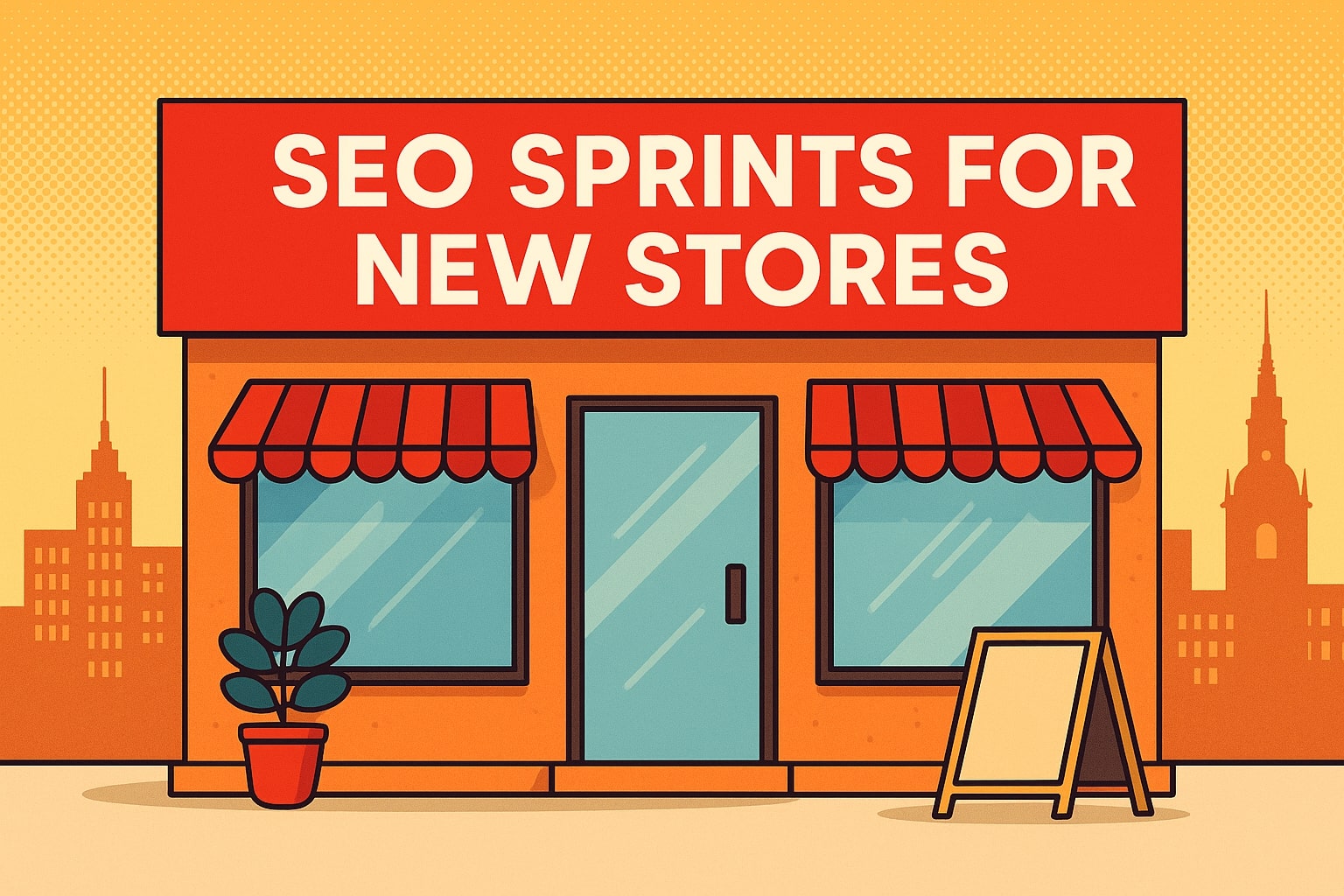Why sprints work for SEO
New stores need momentum and feedback, not a six-month plan that ships nothing. Short sprints turn a giant SEO checklist into small, clear wins that stack: fix crawl blockers, publish intent-led pages, and improve templates. Each cycle ends with measurable results so you know what to do next.
Sprint 0: foundations you can set this week
- Indexability: correct canonical tags, one live version of each URL, and no accidental noindex on key templates.
- Speed baseline: cache + image pipeline + font strategy to keep Core Web Vitals stable.
- Tracking: Search Console, analytics with events for add-to-cart and checkout start.
- Sitemaps: HTML and XML, with clean pagination and faceted nav under control.
Template hygiene
- Unique titles/meta per template
- Readable H1 and intro copy
- Internal links to related content
- Breadcrumbs with structured data
Media pipeline
- WebP/AVIF variants + srcset
- Lazy-load below the fold
- Explicit width/height to avoid CLS
- CDN caching headers set correctly
Sprint 1: keyword map by intent
Map real buying intent to site structure. One primary term per page, with close variants handled by copy, FAQs, and internal links.
- Categories: mid-funnel terms like “office desks”, “gaming chairs”.
- Subcategories/filters: “standing desks”, “oak desks”, “L-shaped”.
- Products: exact model names + key attributes.
- Guides: comparison and how-to topics that support categories.
Sprint 2: publish high-leverage pages
Ship a small set of pages that can rank and convert quickly. For each page, align the intro copy, image alts, internal links, and schema so the whole page points at the same intent.
- Top 2–3 categories improved or created
- 3–5 buying guides answering objections
- Fix the top 10 slowest images across the site
Sprint 3: technical fixes that move the needle
- Trim thin, duplicate, and parameter pages; set clean canonical rules.
- Eliminate render-blocking and reduce JS on templates with low interaction needs.
- Stabilize pagination and link discoverability for large catalogs.
Timeframe
2–4 weeks per sprint with weekly check-ins.
North stars
Clicks from Search, non-brand impressions, assisted revenue.
Health
Index coverage, LCP/CLS/INP, crawl stats.
Measurement and guardrails
Use Search Console to track non-brand queries by page group. Watch category pages first. Keep a weekly snapshot of top 50 queries, page weight, and vitals. If a change hurts vitals or index coverage, roll it back and document the lesson.
Roadmap example for 8 weeks
- Week 1–2: foundations + category template improvements.
- Week 3–4: publish first 3 guides; image pipeline tuned; fix the biggest blockers.
- Week 5–6: expand subcategories; internal linking; FAQ schema on top pages.
- Week 7–8: performance pass; trim thin pages; launch comparison content.
Want a tailored 8-week plan?
We’ll map your categories, pick the first high-leverage pages, fix technical blockers, and report weekly on search clicks, impressions, and assisted revenue.
Request an SEO sprint plan